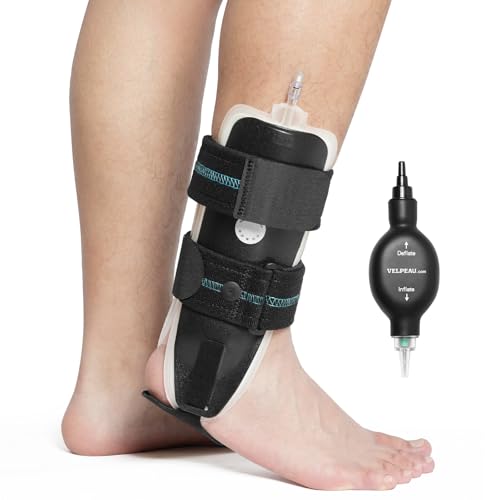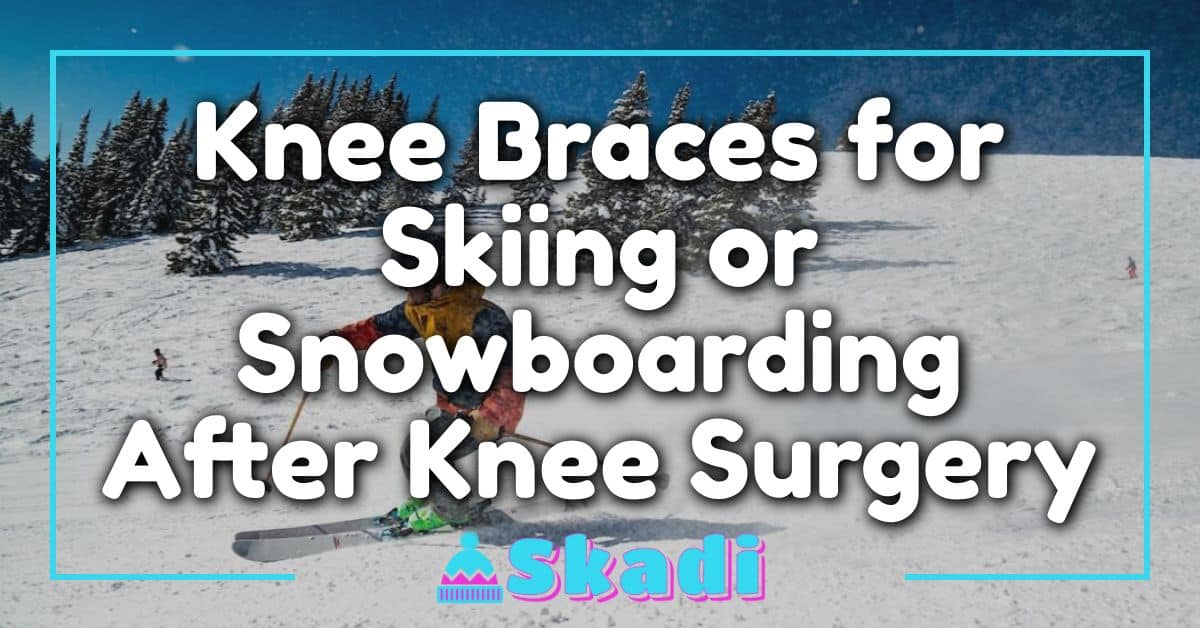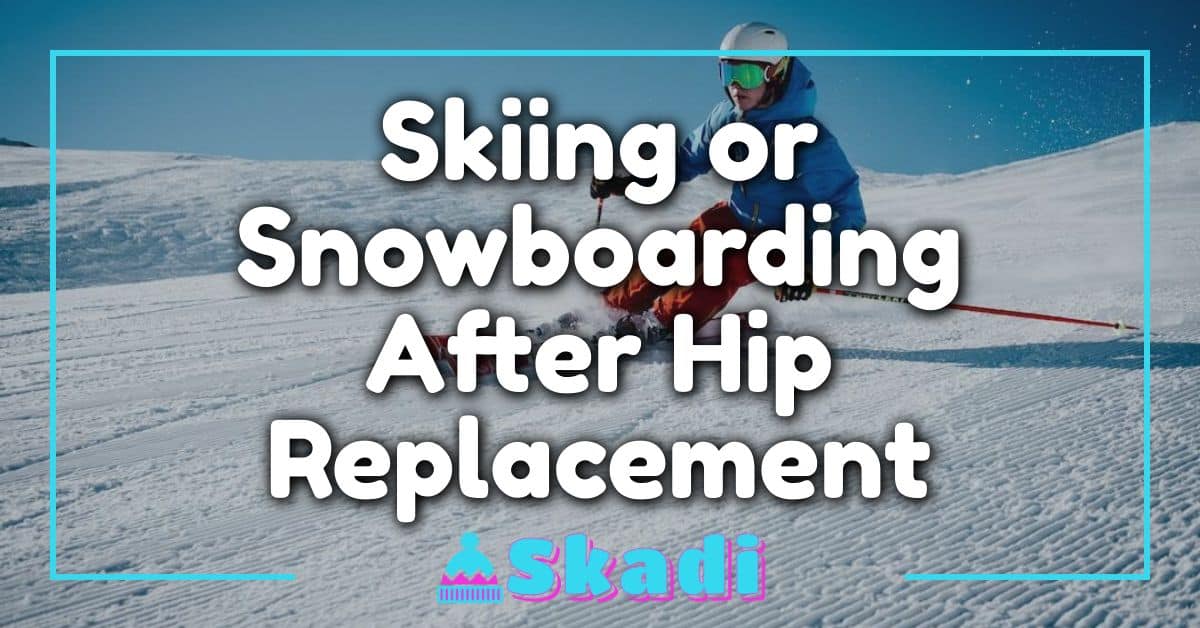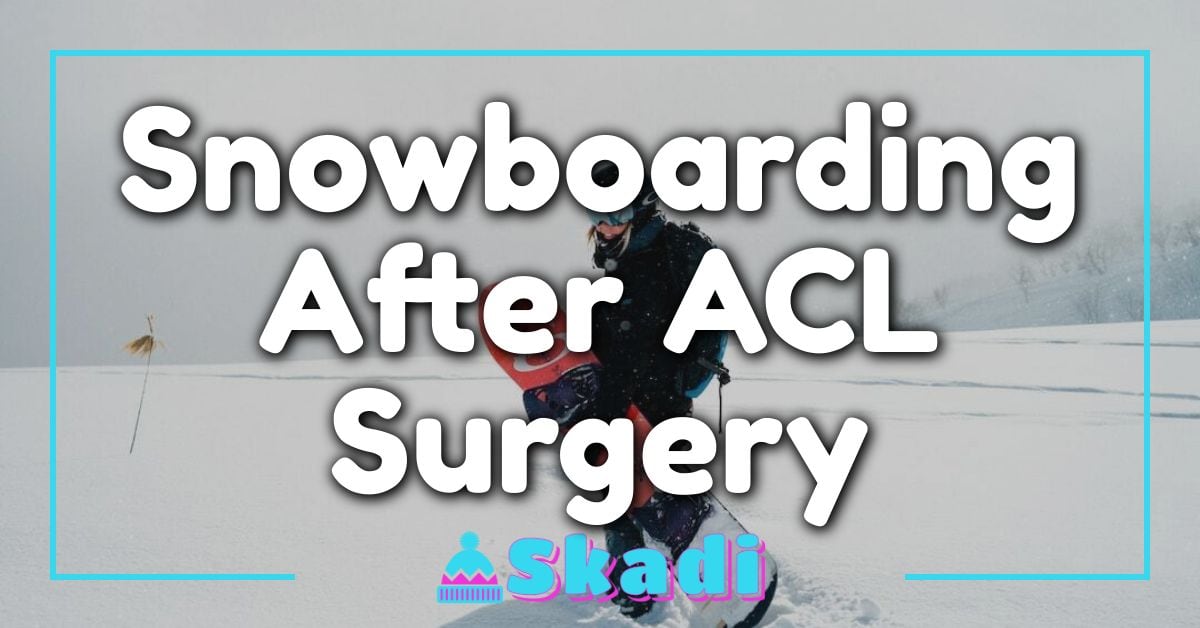You’ve had a rough patch, haven’t you? Snowboarding used to be your adrenaline rush, the thrill that got you up on those frosty mornings. But then came the broken ankle. It’s been a tough journey getting back on your feet (literally), and now you’re wondering if it’s even possible to get back on the board.

Well, I’m here to tell you: don’t hang up your snowboard just yet! With patience, perseverance and the right approach, snowboarding after a broken ankle is not only achievable but can be an immensely rewarding experience.
Remember, everyone’s healing process is different. What worked for one person might not work for another. Listen to YOUR body and take things at YOUR pace. The mountains aren’t going anywhere – they’ll be waiting for you when you’re ready.
Understanding Ankle Injuries in Snowboarding
Snowboarding’s an adrenaline-pumping sport, no doubt about it. But along with the thrilling rides and incredible jumps come some risks – one of them being ankle injuries. Now, you might be thinking, “Ankle injury? That’s just a minor setback.” Well, let me tell you: It’s not as minor as you think.
Here’s the deal. Your ankles play a crucial role when you’re snowboarding. They help steer your board, absorb shocks from landings and keep your balance on tricky terrains. So when an ankle injury happens – say a sprain or even worse, a fracture – it can significantly affect your performance.
Let’s dive into some stats to give you a clearer picture:
| Injury Type | Percentage |
|---|---|
| Sprains | 85% |
| Fractures | 15% |
As shown above, sprains are by far the most common type of ankle injury in snowboarding. A sprained ankle usually means overstretched or torn ligaments which can take weeks or even months to heal fully. Unlike fractures that often need surgical intervention, sprains typically heal with rest and physical therapy but they can still sideline you for quite some time.
Now onto fractures… they’re less common but far more serious. Fractured ankles involve broken bones which may require surgery and extensive rehabilitation. Plus recovery takes longer – we’re talking several months here! So if snowboarding is your passion or profession (or both), this kind of downtime is certainly not something you’d want.
So what causes these injuries? Here are few reasons:
- Incorrect landings
- Collisions with other riders
- Riding beyond skill level
The bottom line is that understanding ankle injuries in snowboarding isn’t just about knowing their types and causes; it’s also about recognizing their impact on your ability to hit the slopes. Remember, knowledge is power. So arm yourself with it and let’s keep our ankles safe out there!
Physical Therapy for a Broken Ankle
After you’ve broken your ankle, one of the first things on your mind might be: When can I get back on my snowboard? Good news! With proper physical therapy, you could be carving down slopes sooner than you think.
Firstly, let’s talk about what happens during physical therapy sessions after an ankle fracture. The main goal here is to regain mobility and strength. This typically involves exercises designed to improve balance, coordination and flexibility. You’ll likely start with non-weight bearing activities such as range of motion exercises, eventually moving onto weight-bearing ones like standing on one foot or walking.
Now, remember it’s important not to rush this stage of your recovery. Even though you’re itching to get back out there, pushing too hard could lead to setbacks in healing or even re-injury. Just take it slow and steady – your body will thank you later!
While every injury is unique and requires a tailored approach from experienced professionals, here are some common therapies used in the rehabilitation process:
- Hydrotherapy: This utilizes water resistance for gentle strengthening exercises.
- Manual Therapy: Techniques such as massage and mobilization are applied by the therapist.
- Functional Training: These exercises aim at getting you back into daily activities (yes, including snowboarding!).
A major part of successful rehabilitation comes from sticking to the plan your therapist gives you. It’s generally suggested that patients continue their prescribed home-exercises even after discharged from formal therapy sessions.
On top of professional guidance in physical therapy sessions,you should also consider nutrition as a key part of healing . Consuming enough protein helps repair tissues while vitamin C aids collagen production – crucial components when mending bones.
Remember that patience is paramount during this time; everyone recovers at their own pace so don’t compare yourself with others – focus instead on celebrating your personal progress! Here’s looking forward to seeing you shredding those slopes again soon.
The Right Time to Return to Snowboarding
You’re itching to get back on the board after that broken ankle, aren’t you? It’s understandable. But it’s crucial not to rush things. Your body needs time to heal properly, and jumping back in too soon could lead to further injury.
Now let’s talk specifics. A common question is: how long should you wait after breaking your ankle before returning to snowboarding? Well, the answer isn’t as straightforward as you might hope. It depends on a few key factors – the severity of your injury, how well you’ve healed, and your overall physical condition.
Typically, simple fractures take around 6-8 weeks to heal completely. If surgery was involved or if there were multiple fractures, it might be closer to 12-16 weeks or more. However, being fully healed doesn’t automatically mean you’re ready for extreme sports like snowboarding again.
Here are some signs that you might be ready:
- No pain: Your ankle shouldn’t hurt when doing regular activities like walking or climbing stairs.
- Full range of motion: You should be able to move your foot in all directions without discomfort.
- Strength: Your injured ankle should have regained its strength and stability.
Even then, it’s essential that you consult with a healthcare professional before strapping into bindings again. They’ll assess your recovery progress and help decide if it’s safe for you return.
Finally, don’t forget about easing back into things gradually once given the green light! First focus on building up confidence and strength before tackling those black diamond runs again – trust us on this one!
Essential Equipment for Snowboarding Post-Injury
So you’re eager to hit the slopes again after your ankle injury, huh? Well, first thing’s first. It’s crucial to gather some essential gear before you strap on that snowboard. This isn’t just about safety, it’s also about ensuring a smoother and more comfortable ride.
Let’s start with an ankle brace. You might be thinking “Isn’t my cast or boot enough?” Truth is, once your doctor gives you the green light to get back on your board, they’ll likely recommend an ankle brace for extra support. A good one will provide stability without restricting too much of your movement.
Next up: snowboarding boots. Now these aren’t just any boots – we’re talking about orthopedic options designed specifically for injured ankles. They’ve got added padding and support in all the right places to protect your weak spots while allowing flexibility where needed.
Don’t forget about padded shorts either! Falling on a sore ankle is bad enough but tumbling onto your tailbone or hips will add insult to injury – literally. Padded shorts offer protection for those sensitive areas and are definitely worth considering if you’re nursing a wounded ankle.
Lastly but certainly not leastly (is that even a word?), consider investing in impact protection gear like knee pads and wrist guards. These pieces can help absorb shock from falls which could otherwise further injure your healing ankle.
Remember though, every person and every injury is unique so what works best for one may not work as well for another. Always consult with medical professionals before making decisions about post-injury equipment needs – because hey, they’re the experts! So here’s wishing you safe slopes and speedy recovery times!
Techniques to Prevent Re-Injury While Snowboarding
Snowboarding after a broken ankle can be a bit nerve-wracking, don’t you think? You’re back on the slopes, heart pounding, and the last thing you want is another tumble leading to re-injury. Let’s get into some techniques and tips that’ll keep your ankles safe while you’re shredding snow.
First off, it’s all about strength and flexibility. Your ankle took quite a hit, didn’t it? Now that it’s on the mend, focus on exercises that’ll strengthen your muscles and increase their flexibility. Try resistance band stretches or balance board workouts – they are great for this!
Next up is gear. Don’t skimp here! Invest in quality boots that provide solid ankle support. Not only will good boots help prevent re-injury, but they’ll also improve your overall performance. And hey, if you’re feeling unsure about stability – consider using an ankle brace for extra support.
Now let’s talk about technique itself because it matters big time! Always maintain proper body alignment when riding down those slopes; make sure your knees are slightly bent and align with your feet. This stance helps absorb shocks from bumps or jumps better than straight legs ever could!
Remember to take things slow initially; there’s no rush to conquer black diamonds right away. Start with easy runs first before gradually challenging yourself with more difficult trails as you regain confidence.
And finally? Listen to your body! Pain is not just an annoyance; it’s a message from your body screaming “Hey something isn’t right!” Respect these signals and take rest days as needed.
In short:
- Strengthen & flex those muscles
- Get sturdy boots & consider an ankle brace
- Watch your technique
- Start slow & progress gradually
- Heed pain signals
Follow these tips and chances of re-injuring that pesky ankle will drop significantly while still letting you enjoy that snowboard ride.
Exercises to Strengthen the Ankle After a Break
Ever thought about how much you rely on your ankles? If you’re an avid snowboarder who’s just had a broken ankle, you probably have. And let me tell ya, it’s not until they’re out of commission that we realize their importance! So, let’s get down to business and talk about exercises that’ll help strengthen your ankle after a break.
First up is what physical therapists call ‘ankle pumps’. Simply put, these involve moving your foot up and down as if pressing on a pedal. You can do them while sitting or lying down. Starting with 10 reps three times daily would be ideal. But remember, don’t push yourself too hard!
Another exercise worth mentioning is ‘ankle circles’. It’s exactly like it sounds – rotating the ankle in circular motions. You’ll want to do both clockwise and counter-clockwise rotations for balanced muscle strength.
Let’s move onto ‘heel raises’, shall we? Stand behind a chair for support and slowly raise your heels off the ground. Lower them back gradually rather than dropping suddenly. This helps work those calf muscles which are crucial for ankle stability.
Lastly but certainly not least are ‘balance exercises’. These could be as simple as standing on one leg at first then progressing to more challenging versions like standing on an unstable surface (like a pillow). These exercises enhance proprioception – that is, your body’s ability to sense its position in space.
Here’s a quick summary:
- Ankle Pumps: 10 reps x 3 times daily
- Ankle Circles: Do both clockwise & counter-clockwise
- Heel Raises: Slowly lift & lower heels
- Balance Exercises: Start with basic single-leg stand
A word of caution though! Always consult with your doctor or physiotherapist before starting any new exercise regimen post-injury. They’ll guide you on the right path, ensuring you don’t overdo it and jeopardize your recovery. After all, the slopes will be waiting for you when you’re ready to ride again!
Personal Stories: Returning to the Slopes Post-Break
Hitting the slopes after a broken ankle may seem like a daunting task. But, you’re not alone in this journey! There are countless snowboarders who’ve been in your shoes and successfully made their comeback.
Our first story is about Mike, a passionate snowboarder from Colorado. Only four months post-break, he was back on his board. His secret? In his words, it’s all about “patience and physical therapy”. He spent hours strengthening his muscles and improving balance with targeted exercises. The result? A strong comeback complete with an improved technique!
Now let’s talk about Sarah from Utah. She broke her ankle during her first season of snowboarding but that didn’t stop her love for the sport. After eight long months of healing, she got back on her board with more determination than ever before. To Sarah, “the fear of falling again was real but it wasn’t stronger than my passion.”
- Mike – 4 months recovery
- Sarah – 8 months recovery
But hey, everyone’s different right? Tim from Vermont took almost two years to fully recover and return to the slopes after breaking his ankle in three places! It was tough and required multiple surgeries but he made it through with sheer determination.
Your journey will be unique just like theirs. Remember, healing takes time so don’t rush yourself! Listen to your body along every step of the way because at the end of the day – your well-being is what matters most!
From these stories we learn:
- Patience & Physical Therapy played a key role in successful comebacks
- Fear is normal but can be overcome by passion & determination
- Every person’s recovery timeline is unique – listen to YOUR body
Conclusion: Moving Forward with Confidence
So you’ve made it this far. You’ve battled through the pain of a broken ankle, endured the long road to recovery, and now you’re ready to jump back on your snowboard. It’s normal to feel a little apprehensive but remember, it’s all about moving forward with confidence.
First off, don’t rush things. Listen to your body and take things one step at a time. Yes, you’re eager to hit the slopes again but patience really is key here.
Next up – keep up with your physical therapy exercises even after you’re back on your board. These will continue strengthening those muscles around your ankle and help prevent future injuries.
- Regular exercise
- Strengthening routines
- Balance work
All these are crucial for getting that ankle back in fighting shape.
And let’s not forget about equipment. Investing in good quality protective gear can make all the difference when it comes to preventing injuries or re-injuries:
- Ankle braces
- Snowboarding boots with good support
- High-quality snowboard
These could be game-changers for you.
Finally, remember why you love snowboarding in the first place! Don’t forget to enjoy yourself out there. That rush of adrenaline as you race down the slopes, the feeling of freedom – that’s what it’s all about!
You’ve got this! It might take some time and effort but trust us; getting back on that board will be worth every bit of sweat and tears. So here’s to moving forward confidently – one snow-filled adventure at a time!
















